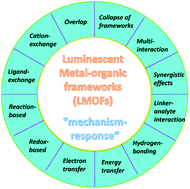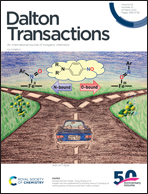Luminescent metal–organic frameworks as chemical sensors based on “mechanism–response”: a review
Abstract
Metal–organic frameworks (MOFs), composed of metal ions/clusters and organic ligands and possessing inherent crystallinity, a definite structure, a tunable pore, and multiple functionalizations, have shown potential for numerous applications. Recently, luminescent MOFs (LMOFs) have attracted much attention as sensing materials because their structural and chemical tunability can afford good selectivity through pore-sieving functions with different pore sizes or host framework–guest interactions. Meanwhile, MOFs with high internal surface areas can concentrate analytes to a high density, thereby decreasing detection limits and exhibiting high sensitivity. Numerous LMOFs have been synthesized and employed for sensing applications. Here, the recent advances of LMOFs as chemical sensors based on “mechanism–response” were summarized, including collapse of frameworks, overlap, cation exchange, ligand exchange, reaction- and redox-based mechanisms, electron transfer, energy transfer, hydrogen bonding, linker–analyte interaction, synergistic effects, and multiple interactions. Moreover, in this review, present challenges and future opportunities in this field are discussed. This review could be a valuable reference for the rational construction and sensing applications of LMOFs.

- This article is part of the themed collections: Dalton Transactions up-and-coming articles and 2021 Frontier and Perspective articles


 Please wait while we load your content...
Please wait while we load your content...